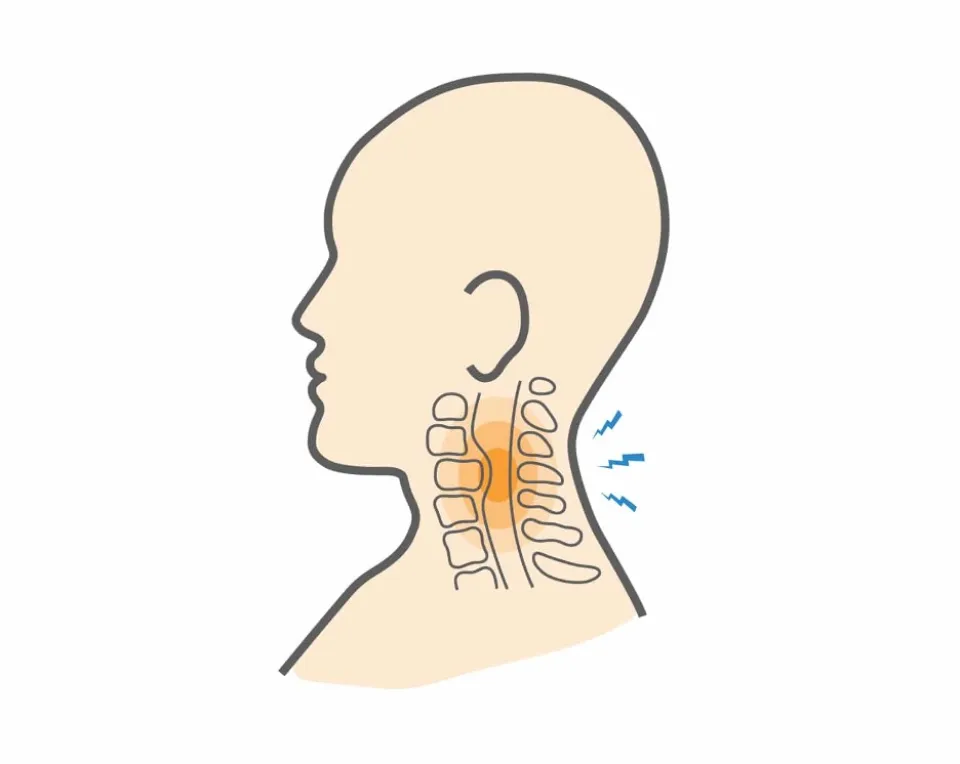Compression of the spinal cord in the cervical spine (neck) results in cervical myelopathy. Seven vertebrae (C1 through C7), six intervertebral discs, and eight nerve roots make up your cervical spine, which is another part of your back. With vertebrae in front and intervertebral discs in back, the spinal cord travels within the vertebral column.
In addition, eight nerve roots that originate from the cervical spine control the movement of your hands, arms, and shoulders. Cervical myelopathy is a serious condition that affects the cervical spine and, if left untreated, can result in irreversible nerve damage, including paralysis and death. Therefore, this condition may necessitate an immediate surgical response.
You can learn more by continuing to read.
Causes of Cervical Myelopathy
Anything that reduces the space around your spinal cord can cause myelopathy, such as
- the typical deterioration brought on by daily life.
- a spinal trauma that results in a neck injury.
- such as arthritis, a disease.
- A tumor.
Myelopathy could result from any condition that could result in stenosis. It is extremely dangerous to have myelopathy.
Cervical myelopathy can develop as a result of the ligaments protecting the brain and spinal cord hardening in addition to the spine’s progressive degeneration. There are more instances of the posterior longitudinal ligament hardening. Therefore, it is implied that the connective tissue between the spine’s bones gradually loses its flexibility and turns into bone. Myelopathy develops as a result of the ligament’s thickening, which causes it to encroach more on space and put pressure on the spinal cord. The region of the spine’s neck is where the site is most common. Your spinal column is made up of tiny bones called vertebrae.
Every vertebra possesses a hole. When all the vertebrae are positioned correctly, the perforations create a secure path for the spinal cord. This channel, which is made up of intervertebral discs, ligaments, and tendons, also supports the spine. The four regions of the spine are the cervical or neck area (C1-C7 vertebrae), thoracic or upper back region (T1-T12), lumbar or lower back region (L1-L5), and the sacrum and coccyx, which are fused bones at the base of the spine. Disorders or degenerative diseases could affect any of these spinal regions. The most frequent cause of cervical myelopathy is aging.
The following spinal disorders can also cause cervical myelopathy
- cervical disc herniation. A painful bulge or rupture can occur from a herniated disc. This could result in pressure on the spinal cord or nerve roots.
- Rheumatoid arthritis. Inflammation results from this autoimmune condition. Inflammation can cause damage to the facet joints in the cervical spine, which can lead to abnormal vertebral movement.
- Trauma. The spinal cord can be compressed as a result of an abrupt injury, such as one sustained in a sports collision or car accident.
- Other cervical spine injuries, such as whiplash
- Spinal infections
- Spinal tumors and cancers
Symptoms of Cervical Myelopathy
The symptoms of cervical myelopathy will typically start in the area of your neck. Neck discomfort or stiffness are early signs of cervical myelopathy.
Untreated cervical myelopathy will cause the spinal cord’s compression to start having neurological effects as well. This can cause more severe symptoms as time goes on, including:
- Weakness or tingling in your arms, shoulders, and hands
- Limited range of motion
- Weakness in your extremities
- Loss of fine motor abilities, like grasping and picking things up
- Numbness or tingling in your arms and hands
- Losing your balance
- Walking difficulties
- Sustained muscle contractions, also known as spasticity

Treatment Options for Cervical Myelopathy
The treatment depends on what caused the myelopathy. Doctors will determine the cause of the myelopathy and start treating it right away if an infection or tumor is to blame. Naturally, non-surgical treatments will address these symptoms. However, the majority of patients will need surgery to relieve the pressure once the spinal cord has been compressed.
- non-invasive procedure. When the symptoms are mild or you are waiting for surgery, doctors will advise nonsurgical treatment. The pain and other symptoms can be reduced with the help of these treatments. Treatment options include bracing, physical therapy, and medications.
- Surgery. Decompression surgery, which includes laminectomy, can treat the condition and end the pain in cases where the spinal cord is being compressed by a herniated disc, cyst, bone spur, or tumor. During this procedure, a surgeon removes lamina, or tiny bones, from the spine. When the bones are gone, the area around the spinal cord is made larger.
Not all myelopathy can be avoided. By strengthening and taking care of your spine, you can reduce your risk of developing this condition. Some myelopathy is brought on by normal aging, wear, and tear. Some back ailments can be avoided or made less severe with the following back care:
- Safely lift any heavy objects. Put your stomach in a tightening position and bend your knees to stand up. If you can’t lift anything on your own, find someone to help you.
- Be sure to keep a healthy weight. Weight gain increases the strain on the spine.
- Stop smoking. Spinal discs from smokers age more rapidly.
- Develop your core muscles in your back and abdomen. Exercises that can be helpful include crunches, planks, and Pilates.
Final Thoughts
For the best results, it’s critical that you receive a cervical myelopathy diagnosis as soon as possible. For some patients, doctors now advise surgery early in the course of the condition. When cervical myelopathy is operated on, patients frequently experience a significant improvement in their symptoms.
Speak with your doctor right away if you are experiencing symptoms that you believe are related to cervical myelopathy. Ask them if you might benefit from diagnostic imaging, such as an MRI or CT scan, and don’t be afraid to ask questions.



